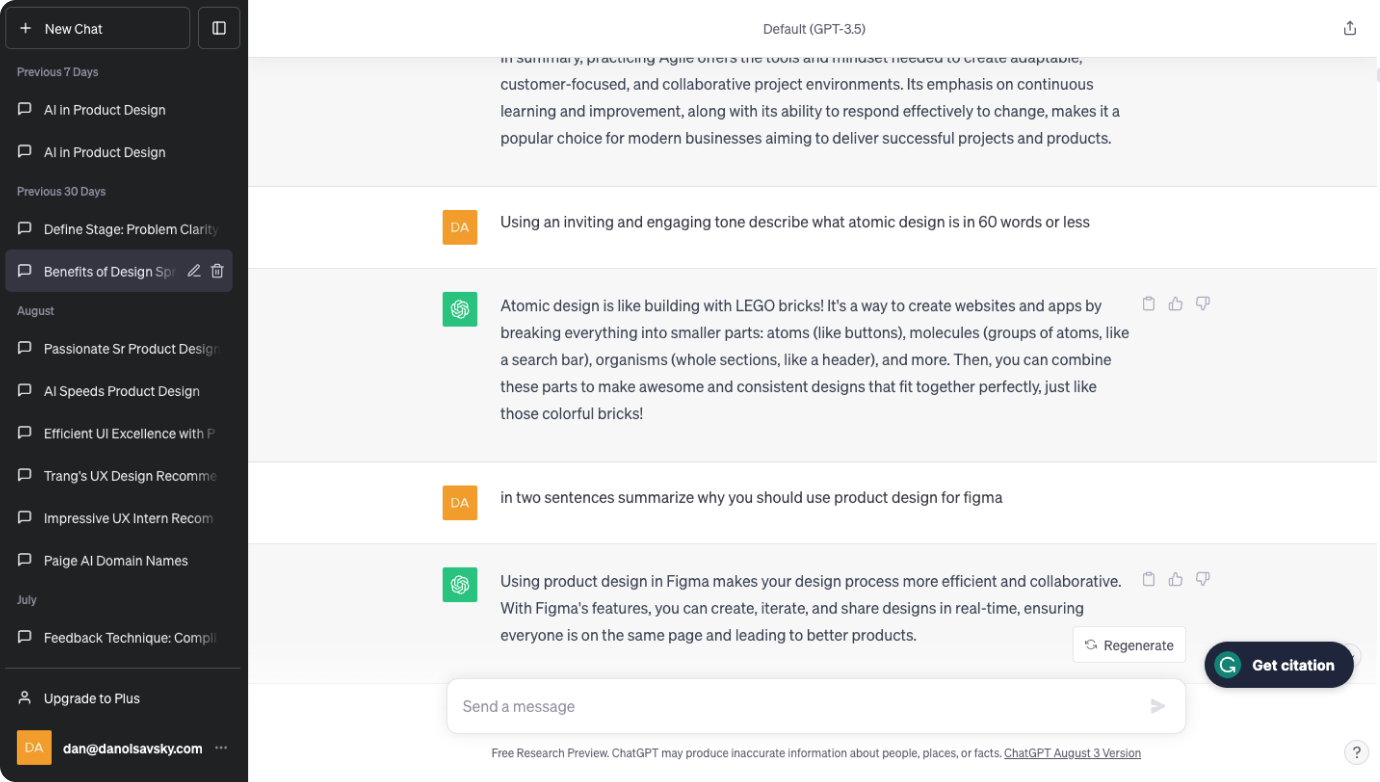Artificial Intelligence • August 23rd, 2023
In the realm of User Experience (UX) design, the ability to understand and converse with users in natural language is a transformative force. This article dives deep into the world of Natural Language Processing (NLP) and its pivotal role in UX design. We explore the applications of NLP in chatbots, voice assistants, and content analysis, uncovering how it shapes conversational interfaces. In this journey, we unravel essential insights for designing effective, user-centric conversational experiences that seamlessly blend technology with human interaction.
The Power of Natural Language Processing
NLP is a branch of artificial intelligence that focuses on the interaction between humans and computers through natural language. It enables machines to understand, interpret, and respond to human language in a way that feels intuitive and human-like. In the context of UX design, NLP introduces a new dimension by making technology more accessible and user-friendly.

ChatGPT is a conversational AI that can chat with you, answer follow-up questions, and even challenge incorrect assumptions.
Chatbots: Conversations Redefined
Chatbots have become ubiquitous in digital interfaces, offering users instant access to information and services. NLP is at the core of chatbot technology, enabling these virtual assistants to understand user queries, provide relevant responses, and engage in meaningful conversations.
The Role of NLP in Chatbots
- Intent Recognition: NLP algorithms decipher user intent by analyzing the words and context of their messages. This allows chatbots to determine what users are looking for and respond accordingly.
- Context Preservation: NLP helps chatbots maintain context during conversations. Users can ask follow-up questions or refer back to previous messages, and the chatbot can seamlessly understand and respond.
- Personalization: NLP-driven chatbots can personalize responses based on user data, creating a more engaging and user-centric experience.
Voice Assistants: AI Companions
Voice assistants like Siri, Alexa, and Google Assistant have revolutionized the way we interact with technology. NLP is the invisible wizard behind these voice-driven interfaces, making it possible to communicate with devices using natural language.
How NLP Enhances Voice Assistants
- Speech Recognition: NLP algorithms convert spoken words into text, allowing voice assistants to understand user commands.
- Language Understanding: NLP enables voice assistants to grasp the nuances of human language, including slang, regional accents, and colloquialisms.
- Conversational Abilities: NLP empowers voice assistants to engage in multi-turn conversations, providing users with a more interactive and human-like experience.
Content Analysis: Unveiling User Insights
Content analysis is a crucial aspect of UX design, as it involves understanding user feedback and sentiment. NLP tools excel at analyzing text data to uncover insights that inform design decisions.
NLP in Content Analysis
- Sentiment Analysis: NLP can determine the sentiment expressed in user reviews, social media comments, or customer feedback, helping designers gauge user satisfaction and areas for improvement.
- Keyword Extraction: NLP algorithms can extract keywords and phrases from user-generated content, identifying recurring themes and topics of interest.
- Language Translation: NLP-powered translation tools break down language barriers, making it possible to analyze feedback from users around the world.
Designing Effective Conversational Interfaces
Designing effective conversational interfaces requires a nuanced approach that takes into account both the capabilities of NLP technology and the expectations of users. Here are some essential insights:
- Clarity and Consistency: Conversational interfaces should provide clear and consistent responses to user queries. Ambiguity and inconsistency can lead to user frustration.
- User Guidance: Provide users with guidance on how to interact with the interface. Consider using prompts or suggestions to help users formulate queries.
- Feedback and Error Handling: Ensure that the interface provides informative feedback and gracefully handles errors or misunderstandings.
- User Data Privacy: Respect user privacy by clearly communicating data usage policies and providing options for data control.
The Future of Conversational UX
As NLP technology continues to advance, the future of conversational UX is brimming with possibilities:
- Emotion Recognition: NLP-driven interfaces may become adept at recognizing user emotions through text or voice, allowing for more empathetic responses.
- Multimodal Conversations: Interfaces that seamlessly combine text, voice, and even gestures will offer more natural and intuitive user experiences.
- Personalized Conversations: NLP algorithms will become more adept at understanding user preferences and tailoring conversations to individual users.
Conclusion
NLP is redefining the landscape of UX design, enabling conversations between users and technology that feel human-like and intuitive. From chatbots and voice assistants to content analysis, NLP enhances user interactions, making technology more accessible and user-centric. The future promises even more engaging and personalized conversational experiences, where NLP plays a central role in bridging the gap between humans and machines.
If you enjoyed reading this article, please share it with a colleague or friend, and join me next week to learn about AI for Design Automation.



